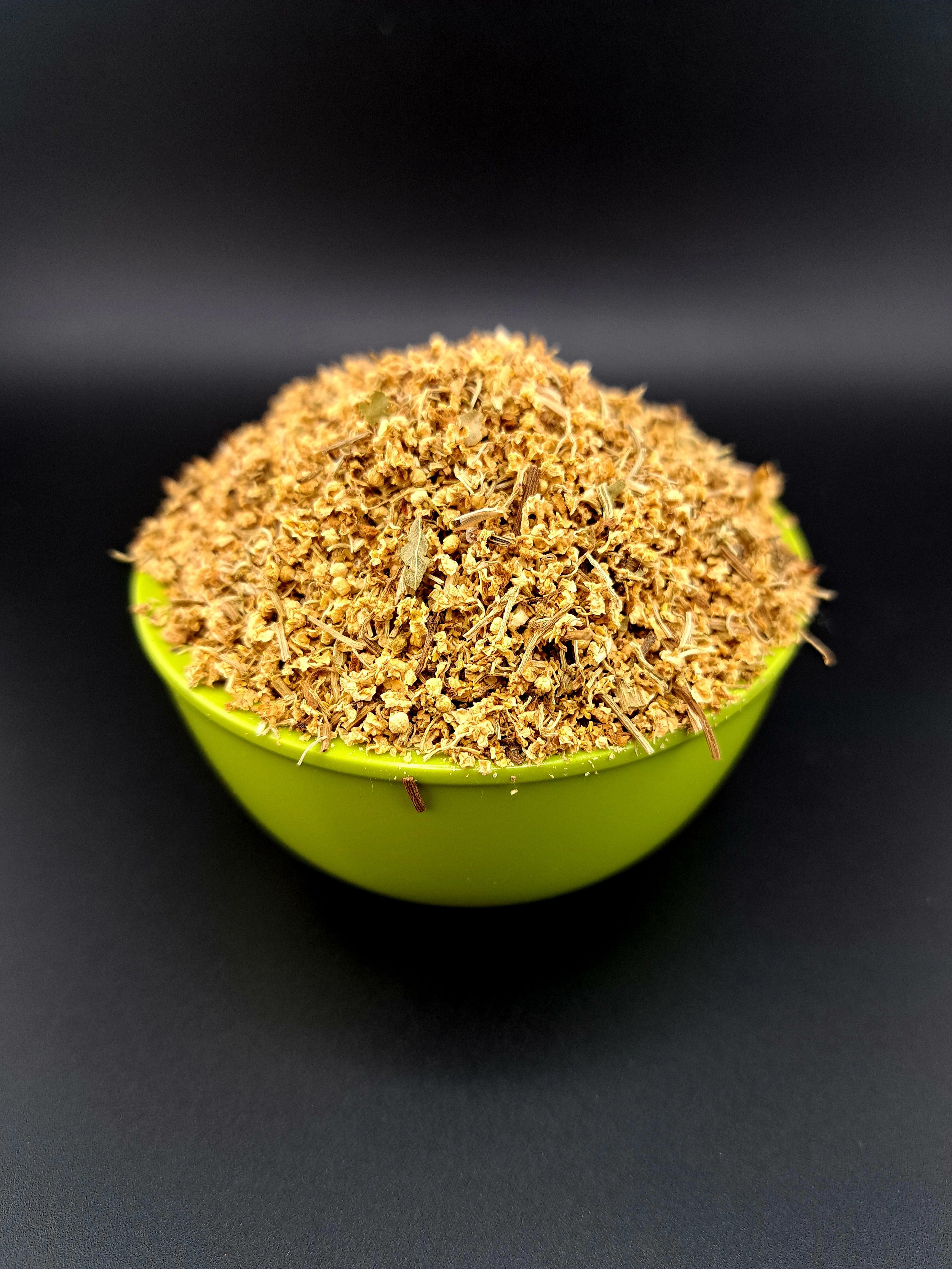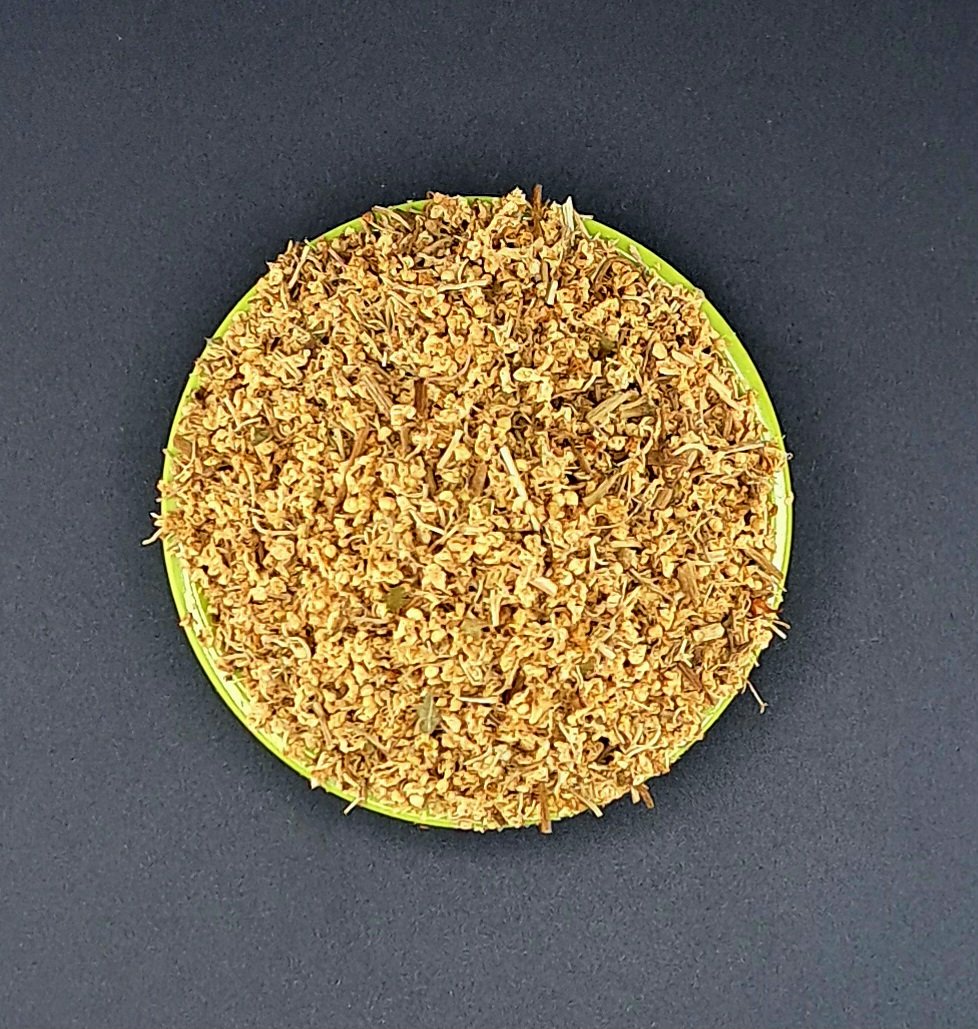

Elder flower organic
1/4 Lb.
Elder flower organic
1/4 Lb.
Elderflower refers to the blossoms of the elder tree (Sambucus nigra or other Sambucus species). These delicate, white flowers are known for their sweet and floral aroma. Here are some key aspects of elderflower:
1. Aromatic Flowers:
Fragrance: Elderflowers have a sweet and floral fragrance that is both pleasant and distinctive.
Appearance: The flowers are small, cream-colored, and arranged in clusters.
2. Culinary Uses:
Flavor Profile: Elderflowers have a sweet and mildly floral taste.
Edible: The flowers are edible and are used in various culinary applications, including beverages, desserts, and infusions.
3. Beverages:
Elderflower Cordial: Elderflowers are commonly used to make elderflower cordial, a sweet syrup that can be diluted with water or added to cocktails.
Teas: Elderflower is used to make herbal teas, often blended with other herbs for a soothing and fragrant infusion.
4. Cocktails:
Elderflower Liqueur: Elderflower is a key ingredient in the production of elderflower liqueur, which is used in cocktails and mixed drinks for its floral notes.
Cocktail Garnish: Elderflowers are sometimes used as a garnish in cocktails for both visual appeal and flavor.
5. Desserts:
Floral Desserts: Elderflowers can be used to infuse a floral flavor into desserts such as ice creams, sorbets, and pastries.
Jams and Jellies: Elderflower can be used to make jams and jellies, adding a unique floral sweetness.
6. Traditional Medicine:
Traditional Uses: In traditional herbal medicine, elderflowers have been used for their potential diuretic and anti-inflammatory properties.
Cough Remedies: Elderflower is sometimes included in herbal remedies for respiratory issues and coughs.
7. Dried Elderflowers:
Storage: Dried elderflowers are also available and can be used in teas and infusions.
Long Shelf Life: Dried elderflowers have a longer shelf life compared to fresh flowers.
8. Harvesting:
Seasonality: Elderflowers are typically harvested in late spring to early summer when the flowers are in full bloom.
Timing: It's important to harvest elderflowers at the right time, as the flavor may vary depending on when they are picked.
9. Potential Toxicity of Other Parts:
Caution: While the flowers are generally considered safe, other parts of the elder plant, such as the leaves and unripe berries, can contain cyanogenic glycosides and should be avoided due to potential toxicity.
10. Culinary Creativity:
Versatility: Elderflowers offer a unique and versatile flavor, allowing for creative culinary experimentation in both sweet and savory dishes.
Elderflowers contribute a delightful and aromatic quality to a variety of culinary creations, from beverages and desserts to herbal remedies. When using elderflowers, it's important to ensure that they are harvested from safe sources and that only the edible blossoms are used in culinary applications.
